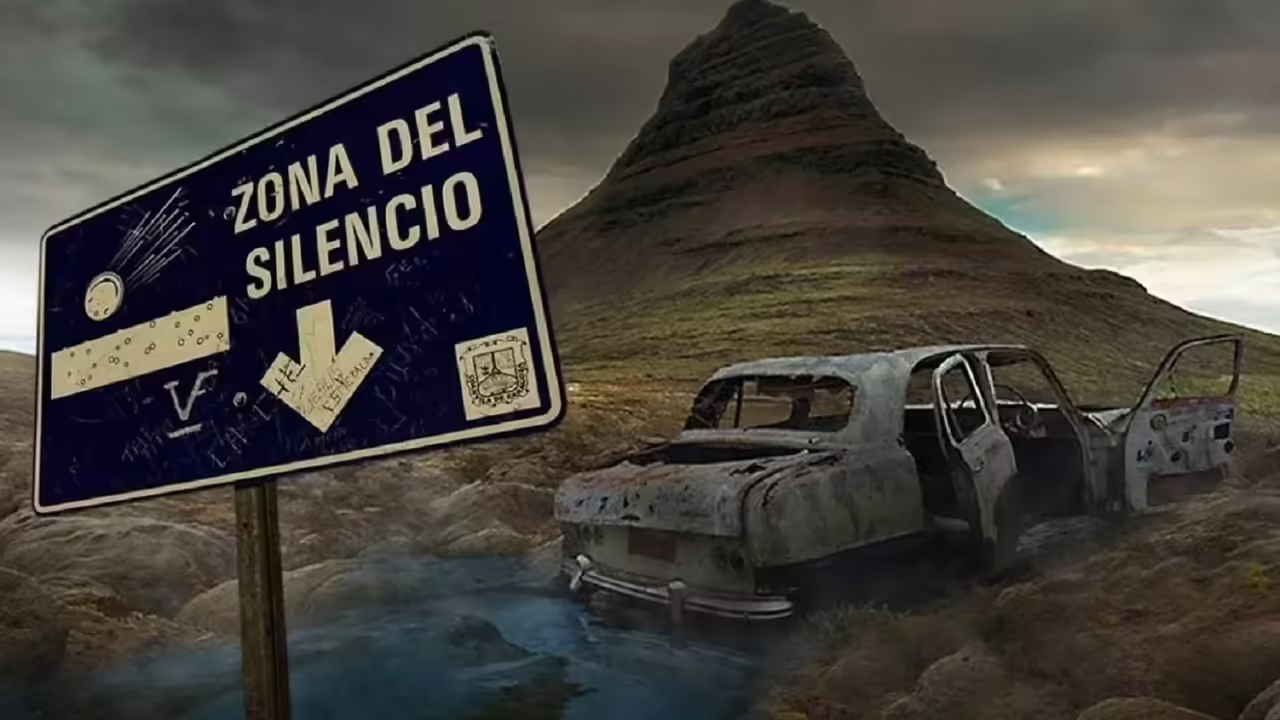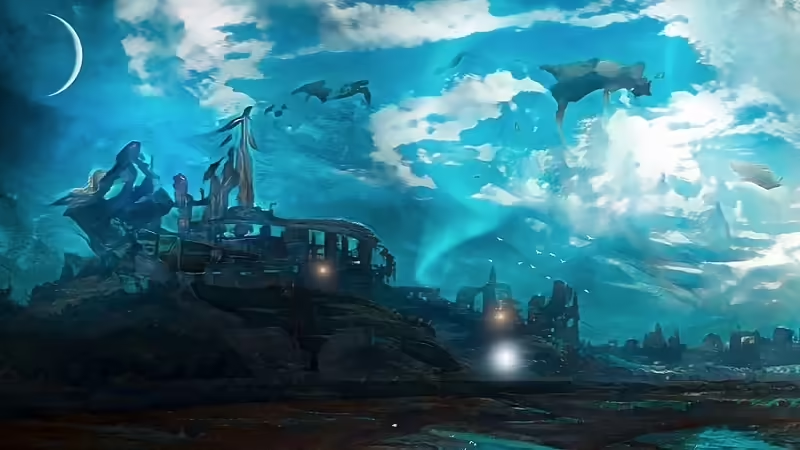
A strange place in Mexico where impressive phenomena occur, where thick clouds usually cover the sun all the time, surrounded by a desert where if it rains, those who are in the vicinity are trapped for several days.
It has generated paranormal stories and legends of all kinds, from extraterrestrials, to magical plants, ghosts, hot rocks, mysterious people and much more. Welcome to the enigmatic zone of Silencio:
Specialists from various branches are very attracted to this corner of the world. Ufologists, scientists, parapsychologists, mystics, curious and others. Exactly the site is located in a region called the Mapimí Biosphere Reserve, in limits with the states of Chihuahua, Durango and Coahuila.
In the Bolsón de Mapimí, thousands of years ago there was a seabed, so many marine fossils have been found throughout the area.
The different legends
Surprising stories have always been heard about this place, but they became more popular after a peculiar event occurred on July 11, 1970, when the U.S. military forces were testing an Athena missile, which strangely crashed in the so-called Zone of Silence.
The missile was destined for the New Mexico missile base, White Sands. However, it traveled 400 kilometers further south, crossing the Mexican border and crashing into a sand dune.
In agreement with the Mexican authorities, a team of Americans set out to scour the terrain to study all the details of the incident and recover all the remains of the device. As it is a desert area, they were forced to build a road and a mini runway for landing. Curiously, at one point, all the communication equipment was blocked and was useless.
This inexplicable event, together with the strange deviation of the missile, but also with an event that took place some time ago in this same spot, led the international community to call this very special region “The Zone of Silence”.
The pilot who was saved from dying there
That other event that occurred before the famous American projectile, was the curious accident suffered by the pilot Francisco Sarabia Tinoco, who at that time was the most recognized Mexican aviator, since he achieved the flight speed record between Mexico City and New York, in 1939.
Francisco Sarabia himself relates that when he was flying over the Chihuahua desert, in the airspace of Durango, inexplicably the radio went dead and immediately the air traffic controllers were in a state of emergency. The pilot had no choice but to make his best efforts to make a landing that would allow him and his crew to save their lives.
Fortunately they survived, but a specific reason for the cause of the crash could never be found. It was the first official recorded case of unusual electromagnetic failures at these coordinates. Some versions claim that an incomprehensible magnetic force is produced there, which is the cause of these accidents and causes anomalies of all kinds.
Extraterrestrials and Supernatural Creatures
Several locals have testified that they have seen strange unidentified flying objects and even the beings that crew them. The testimonies also mention that they have observed impressive and inexplicable mutations of the flora and also of several animals whose habitat is in the Zone of Silence.
Aeroliths
In some parts of this zone, lie some of these spectacular stones from space, meteors that managed to survive the explosion that occurs when they enter the Earth’s atmosphere and collide with the planetary surface. They have a very unique beauty.
The purple nopal
Some associate this plant with extraterrestrial vegetation. It presents very intense purple colors in the dry seasons. It is one of the main attractions of the place. The species of this nopal is exclusive of very few places in the world.
The Mapimí turtle
This is the largest turtle species in North America. It is a reptile of great proportions, but unfortunately it is on the verge of extinction, although there are still a few that can still be seen in the northeastern part of the state of Durango, in the middle of the Zone of Silence.
Subway desert: It is believed that under the desert there is a vast subway labyrinth of caves and canyons.
Seismic activity: The region is known for its seismic activity and for having one of the highest concentrations of septic tanks in the world.
Cultural preservation: The Bolsón de Mapimí is home to indigenous communities that have preserved their traditions and culture for centuries.
Rich mineral resources: A large amount of valuable minerals have been discovered in the region, including silver, gold, copper and other precious metals.
Unique flora and fauna: The desert is home to a wide variety of unique plant and animal species, including cacti, snakes, scorpions and birds of prey.
Geological history: The region is a living geological archive that has witnessed climatic and geological changes over millions of years.
Astronomical observatory: El Bolsón de Mapimí is home to one of the largest and most advanced astronomical observatories in the world, with one of the best views of the night sky.
Scientific research: Many scientists and research teams have visited the Bolsón de Mapimí to study its geology, biology, astronomy and other aspects, but much remains to be discovered.
The Bolsón de Mapimí is a desert region in northern Mexico that has attracted the attention of scientists from around the world due to its unique and mysterious characteristics. From the presence of extraterrestrial life to seismic activity, the region has been the subject of numerous scientific investigations in recent years.
One of the most interesting investigations is the search for extraterrestrial life in the Mapimí Bolson. Over the decades, sightings of unidentified flying objects (UFOs) have been reported in the region, and many believe that extraterrestrial life may exist in the desert. In recent years, scientists from around the world have conducted research to determine if extraterrestrial life forms exist in the region, but so far, no concrete evidence has been found.
Another important investigation is the geology of the Bolsón de Mapimí. The region is known for its seismic activity and for having one of the highest concentrations of septic tanks in the world. Scientists have studied the desert subsurface to better understand the seismic activity and to determine if valuable mineral resources exist below the surface. In addition, the Mapimí Bolson is a living geologic archive that has witnessed climatic and geologic changes over millions of years, and scientists have investigated the region to better understand the Earth’s geologic history.
Research on the flora and fauna of the Mapimí Bolson is also important. The desert is home to a wide variety of unique plant and animal species, including cacti, snakes, scorpions, and birds of prey. Scientists have studied the biology of these species to better understand how they have managed to survive in such a hostile environment. In addition, studies of the fauna and flora of the Bolsón de Mapimí have helped scientists better understand how ecosystems and species can adapt to climatic and environmental changes.
Another important area of research is astronomy in the Bolsón de Mapimí. The region is home to one of the most important astronomical observatories in Mexico, the San Pedro Martir National Astronomical Observatory. This observatory has been used by scientists to study the galaxy and stars in detail. In addition, the night sky at Bolsón de Mapimí is surprisingly clear, making it ideal for astronomical observation. Astronomy research at Bolsón de Mapimí has allowed scientists to discover new stars and galaxies, as well as to better understand the universe and its evolution.
In addition to the scientific research mentioned earlier, the Mapimí Basin has also been the subject of various environmental studies. Scientists have studied the unique ecosystems that exist in the desert, including the various plant and animal species that have adapted to life in such a harsh environment. These studies have helped us understand the complex interactions between the different species and their impact on the environment.
Another area of study in the Mapimí Basin is geology. The region is known for its unique geological formations, including the spectacular gypsum dunes and the cave systems that are rich in minerals. Scientists have been studying these geological formations for decades, trying to understand how they were formed and the processes that led to their formation. These studies have also helped us understand the history of the Earth and its evolution.
The Mapimí Basin is also home to several important archaeological sites, including the caves of Las Grutas and the Paquimé ruins. These sites have provided valuable insights into the ancient cultures that lived in the region, including their beliefs, lifestyles, and economic activities. Archaeologists have used various techniques, such as carbon dating, to date the artifacts and understand the timeline of the cultures that lived in the area.
One of the most important factors contributing to the scientific significance of the Mapimí Basin is its isolation. The region is far from any major cities and is largely untouched by human activity. This has allowed scientists to study the area in its natural state, free from the influences of human development. For example, the region’s air quality is among the best in the world, making it an ideal location for studying atmospheric phenomena.
Another factor contributing to the scientific significance of the Mapimí Basin is the unique geological features that can be found there. The region is home to numerous geological formations, including the giant gypsum dunes, the cave systems, and the volcanic mountains. These geological features have provided scientists with a wealth of information about the Earth’s history and processes that have shaped the planet over millions of years.
In addition to the natural features, the Mapimí Basin has also been the subject of several scientific expeditions. These expeditions have allowed scientists to study the area in greater detail and have resulted in many new discoveries. For example, in recent years, a team of scientists has been exploring the cave systems in the Mapimí Basin, discovering new species of bats, spiders, and other animals that were previously unknown to science.







